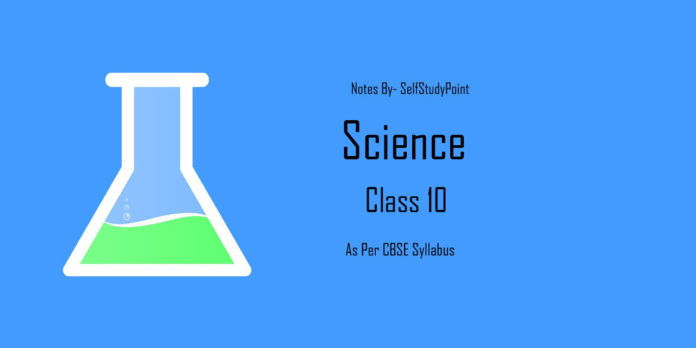
Life Processes
- All living things perform certain life processes like growth, excretion, respiration, circulation etc.
- The basic functions performed by living organisms for their survival and body maintenance are called life process.
- Basic life processes are Nutrition, Respiration, Transportation, Excretion etc. Life Processes require energy which is provided by nutrition.
Modes of Nutrition
Autotrophic:
Kind of nutrition in which organisms can synthesize their own food Eg. Green Plants
Heterotrophic:
Kind of nutrition of which organisms do not possess the ability to synthesize their own food. They depend on autotrophs for their food supply directly or indirectly. Eg. Animals, Fungi
Autotrophic Nutrition
- Autotrophs: The organisms which can make their own food are called autotrophs (green plants).
- Photosynthesis: The process by which green plants make their own food with the help of CO2 and H2O in the presence of chlorophyll and sunlight is also called photosynthesis.
- Raw Materials for Photosynthesis: CO2 & H2O
- The site of Photosynthesis: Chloroplast in the leaf. Chloroplast contain chlorophyll. (green pigment).

Main Events of Photosynthesis
Absorption of Sunlight energy by chlorophyll. CO2 to carbohydrates.
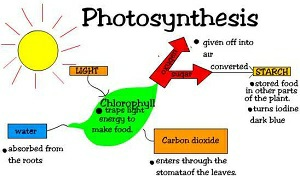
Stomata :
Tiny pores present on the surface of the leaves.
Functions of Stomata
- Exchange of gases
- Loses large amount of water [water vapour] during transpiration and helps in up flow of water

- Chloroplast contains the green pigment chlorophyll which has a pivotal role in photosynthesis.
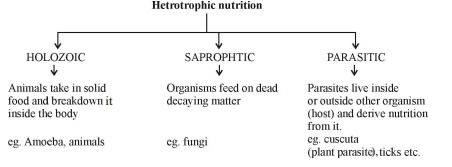
Nutrition in Animals

Nutrition in Amoeba
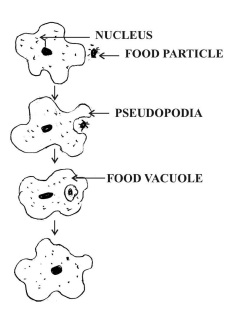 Amoeba has a holozoic nutrition. Thus, solid food particles are ingested which react with enzymes and are digested. It is an omnivore.
Amoeba has a holozoic nutrition. Thus, solid food particles are ingested which react with enzymes and are digested. It is an omnivore.
- Amoeba move with the help of pseudopodia (extension of the cell membrane)
- Food vacuole is formed
- Undigested food is thrown out.
Nutrition in Human Beings
- The human digestive system comprises of the alimentary canal and associated digestive glands.
Human digestive system
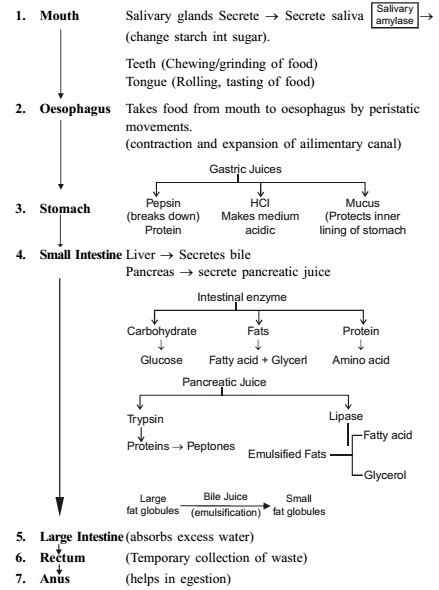
As shown in the flowchart, digestion begins from the mouth. In the mouth, it is broken down by salivary amylase. The food moves to the stomach through the oesophagus which performs the peristaltic movement. Enzymes and various digestion juices from the liver, gallbladder and pancreas act on the chunks from the stomach in the small intestine. In the large intestine, the remaining nutrients are absorbed and the leftover is removed from the body through the rectum and anus.


